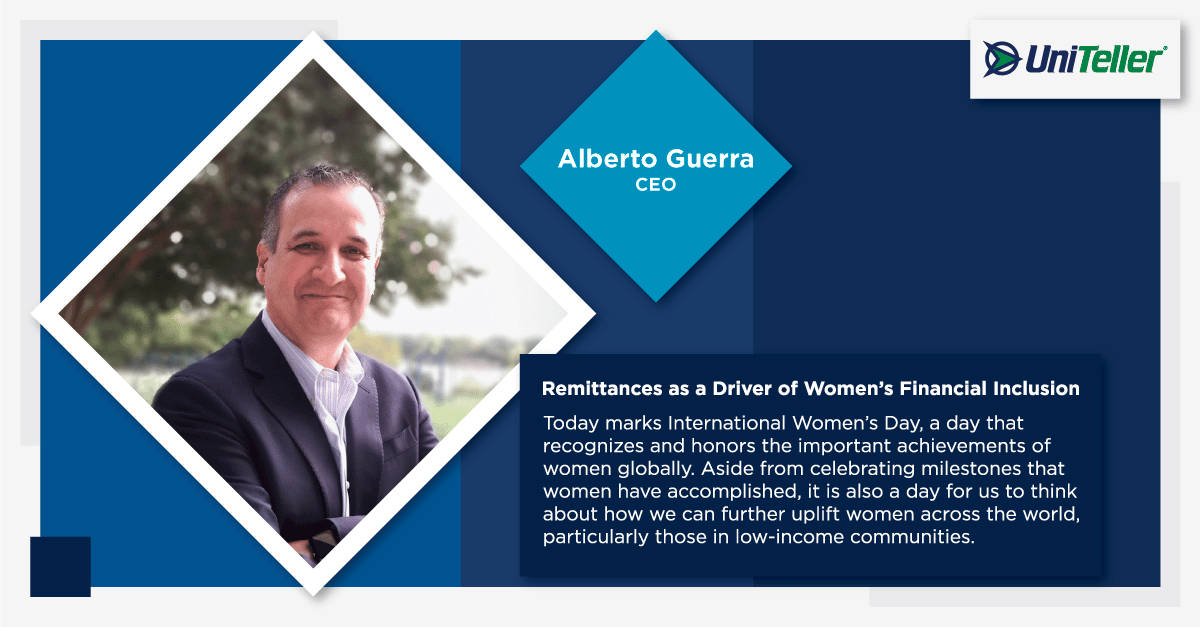Uplifting women in low-income communities to better manage remittances.
Today marks International Women’s Day, a day that recognizes and honors women’s significant achievements globally.
Aside from celebrating milestones that women have accomplished, it is also a day for us to think about how we can further uplift women across the world, particularly those in low-income communities.
Role of Women in Rural Communities
Women in rural areas typically assume a caregiver’s role while their spouses take on the breadwinner’s responsibility, providing food and financial security to the family. In most developing countries, women constitute the majority of remittance recipients as their spouses take on job opportunities overseas. For example, in Guatemala, a key remittance-receiving market in Latin America, approximately 63% of remittance recipients are women[1].
With women in rural communities playing a central role in managing their family’s day-to-day household expenses, remittances have the potential to transform their roles, both within the household and the larger community.
Beyond examining how they can effectively allocate funds for their families’ basic needs; it is critical to empower these women to create sustainable wealth through remittances to uplift their role within the family in the long run.
How Digital Remittances Empower Women
While digital remittances were developed as a tool for domestic transfers and payments, it has vastly revolutionized the way in which people send money across borders.
Not only does it increase financial access to low-income communities who are traditionally unbanked, but digital remittances also have multiple distinctive features that make them particularly appealing to women as compared to other remittance channels.
Digital remittances offer increased convenience, privacy, and security, which are characteristics that women especially value. Transfers can be made instantly from any location at any time without the need to travel to a paying agent or a bank, offering women time savings and greater control over their lives.
Interestingly, digital transactions have led to more women receiving remittances in higher frequencies than cash-based remittance channels[2]. People using traditional cash-based remittance channels typically send a one-time lump sum every month to the remittance recipient.
With digital remittances enabling people to send lower amounts more frequently back home, it gives women more control over household budgets and increases the likelihood of greater economic empowerment.
Accelerating Women’s Financial Inclusion and Poverty Reduction
Most importantly, the ability to receive remittances digitally offers women the opportunity to be part of a digital financial ecosystem and access a broad and sophisticated range of digital financial services beyond remittances.
Women have the option to either store the received funds safely on their digital account or use it in other ways, such as making digital payments to buy groceries from a local merchant, pay for utility bills, or school expenses.
In the future, creating an enabling regulatory environment around mobile money-enabled remittances will be critical to allow women to benefit from the advantages of digital remittance channels.
At UniTeller, we firmly believe that the world has a lot of room for improvement in increasing the accessibility of digital financial solutions for low-income communities, including women.
By expanding their access to a wider range of products – credit, savings, domestic and international payments, women will hold bigger decision-making power within the family. We believe this will undoubtedly strengthen their economic empowerment in the long term.
[1] https://blogs.worldbank.org/peoplemove/women-move-mexican-women-and-remittances







